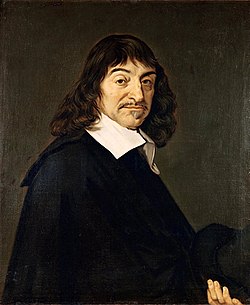In physical cosmology, cosmological perturbation theory is the theory by which the evolution of structure is understood in the Big Bang model. It uses general relativity to compute the gravitational forces causing small perturbations to grow and eventually seed the formation of stars, quasars, galaxies and clusters. It only applies to situations in which the universe is predominantly homogeneous, such as during cosmic inflation and large parts of the Big Bang. The universe is believed to still be homogeneous enough that the theory is a good approximation on the largest scales, but on smaller scales more involved techniques, such as N-body simulations, must be used.
Because of the gauge invariance of general relativity, the correct formulation of cosmological perturbation theory is subtle. In particular, when describing an inhomogeneous spacetime there is often not a preferred coordinate choice. There are currently two distinct approaches to perturbation theory in classical general relativity:
- gauge-invariant perturbation theory based on foliating a space-time with hyper-surfaces, and
- 1+3 covariant gauge-invariant perturbation theory based on threading a space-time with frames.
Gauge-invariant perturbation theory
The gauge-invariant perturbation theory is based on developments by Bardeen (1980), Kodama and Sasaki (1984) building on the work of Lifshitz (1946). This is the standard approach to perturbation theory of general relativity for cosmology. This approach is widely used for the computation of anisotropies in the cosmic microwave background radiation as part of the physical cosmology program and focuses on predictions arising from linearisations that preserve gauge invariance with respect to Friedmann-Lemaître-Robertson-Walker (FLRW) models. This approach draws heavily on the use of Newtonian like analogue and usually has as it starting point the FRW background around which perturbations are developed. The approach is non-local and coordinate dependent but gauge invariant as the resulting linear framework is built from a specified family of background hyper-surfaces which are linked by gauge preserving mappings to foliate the space-time. Although intuitive this approach does not deal well with the nonlinearities natural to general relativity.
1+3 covariant gauge-invariant perturbation theory
In relativistic cosmology using the Lagrangian threading dynamics of Ehlers (1971) and Ellis (1971) it is usual to use the gauge-invariant covariant perturbation theory developed by Hawking (1966) and Ellis and Bruni (1989). Here rather than starting with a background and perturbing away from that background one starts with full general relativity and systematically reduces the theory down to one that is linear around a particular background. The approach is local and both covariant as well as gauge invariant but can be non-linear because the approach is built around the local comoving observer frame (see frame bundle) which is used to thread the entire space-time. This approach to perturbation theory produces differential equations that are of just the right order needed to describe the true physical degrees of freedom and as such no non-physical gauge modes exist. It is usual to express the theory in a coordinate free manner. For applications of kinetic theory, because one is required to use the full tangent bundle, it becomes convenient to use the tetrad formulation of relativistic cosmology. The application of this approach to the computation of anisotropies in cosmic microwave background radiation requires the linearization of the full relativistic kinetic theory developed by Thorne (1980) and Ellis, Matravers and Treciokas (1983).
Gauge freedom and frame fixing
In relativistic cosmology there is a freedom associated with the choice of threading frame, this frame choice is distinct from choice associated with coordinates. Picking this frame is equivalent to fixing the choice of timelike world lines mapped into each other, this reduces the gauge freedom it does not fix the gauge but the theory remains gauge invariant under the remaining gauge freedoms. In order to fix the gauge a specification of correspondences between the time surfaces in the real universe (perturbed) and the background universe are required along with the correspondences between points on the initial spacelike surfaces in the background and in the real universe. This is the link between the gauge-invariant perturbation theory and the gauge-invariant covariant perturbation theory. Gauge invariance is only guaranteed if the choice of frame coincides exactly with that of the background; usually this is trivial to ensure because physical frames have this property.
